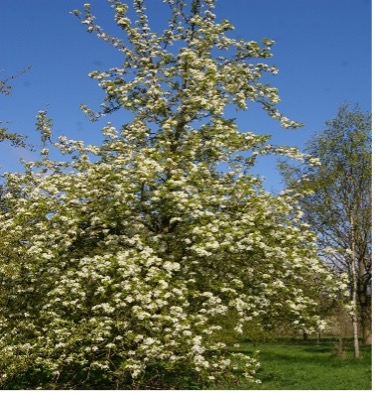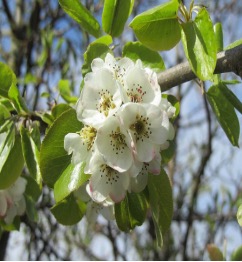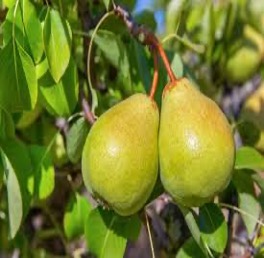HERBAL GARDEN
Vivek college of Ayurvedic Sciences & Hospital Bijnor UP
नाशपाती



Classification
Synoyms
Pear tree
European pear
Pyrus
Habit
Medium-sized deciduous tree
Habitat
Native to Europe and Western Asia, widely cultivated in temperate regions, including the Himalayan belt in India (Jammu & Kashmir, Himachal Pradesh, Uttarakhand).
Morphology
- Tree reaches 10–17 meters in height
- Leaves are oval, glossy and alternately arranged
- Flowers are white, with five petals, in clusters
- Fruits are bell-shaped, green or yellow when ripe, sweet and juicy
- Bark is rough and grayish-brown
Chemical Composition
Dietary fiber (pectin)
Vitamins: A, C, K, and B-complex
Minerals: Potassium, Magnesium, Calcium, Phosphorus
Antioxidants: Quercetin, Catechins, Chlorogenic acid
Sugars: Glucose, Fructose, Sucrose
, Tannins, flavonoids and phenolic acids
Guna-Karma
Rasa- Madhura, Kashaya
Guna- Laghu, Snigdha
Virya- Shita
Vipaka- Madhura
Karma- Trishnanigrahana, Dahaprashamana, Basti shodhaka, Mutrala, Pittahara , Hridaya
Doshakarma- Pitta-Vatahara
Medicinal uses
Useful Part
Fruit
Doses
Fresh fruit: 100–200 g daily
Juice: 50–100 ml
Dried fruit powder: 5–10 g
Important Formulation
Used in fruit-based Ayurvedic syrups and cooling tonics
Pyrus Fruit Extract (used in Unani and Western herbal medicine)
Ingredient in herbal cough syrups and renal tonics
Shloka
टंक मधुरं शीतं स्निग्धं तृष्णानिबर्हणम् |
दाहपित्तहरं वृष्यं रक्तपित्तविनाशनम् ||
Hindi Name
नासपाती
English Name
Pear
Botanical Name
Pyrus communis Linn.
Family
Rosaceae